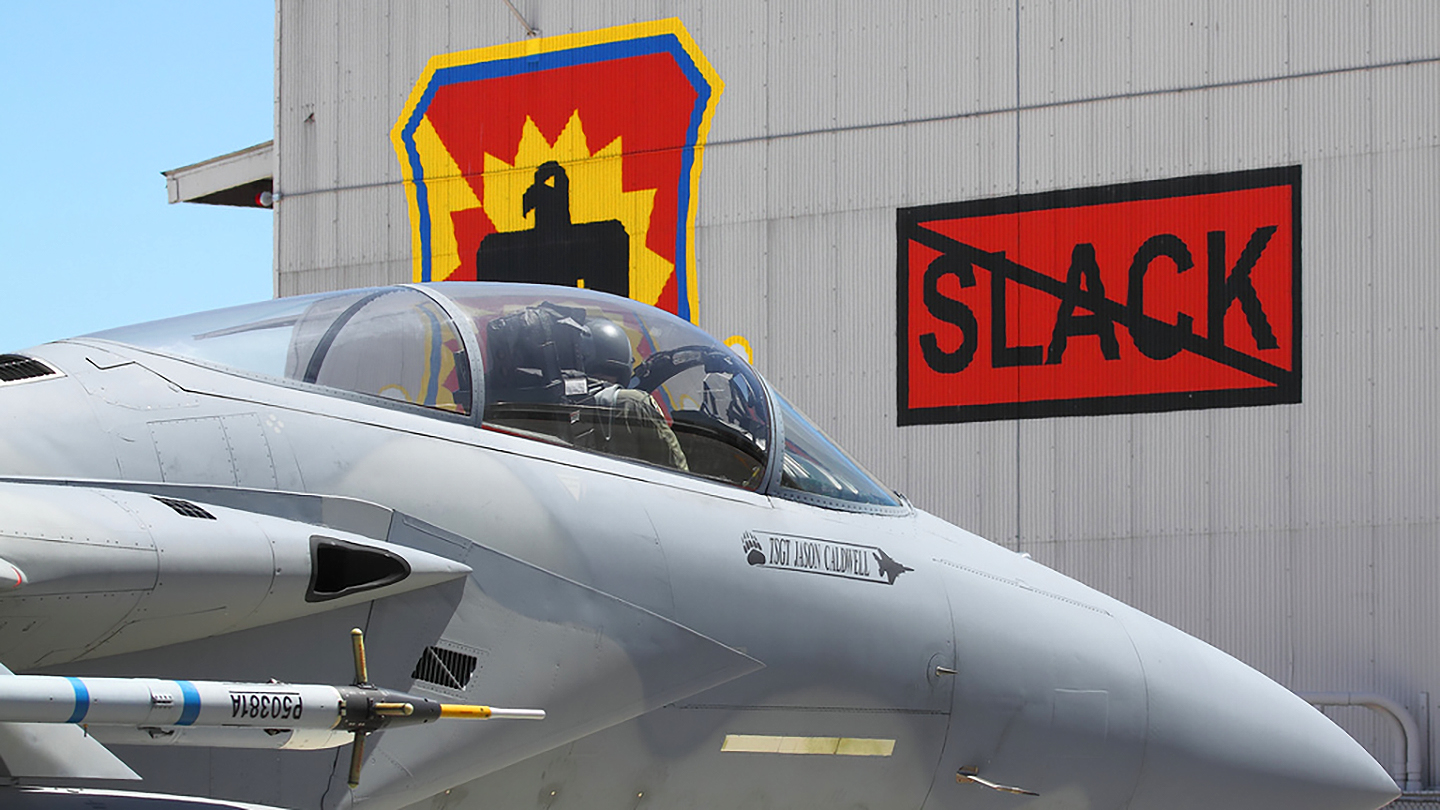The airbase of Kingsley Field, in Klamath Falls, Oregon, will now replace its current F-15C/D Eagles with F-35As. The move comes just a few years after it was officially announced that the base would convert over to the F-15EX and that its 173rd Fighter Wing would continue its mantle as an F-15 training unit.
Now, just as we have suspected would be the case, the Air Force has decided to transfer all Eagle training, both for the F-15EX and F-15E, to Seymour Johnson Air Force Base in North Carolina. It also raises more questions about fielding a fleet of just 104 F-15EXs, and how it will fit in with plans to potentially drastically reduce the F-15E Strike Eagle fleet, another facet of the Air Force’s truncated fighter fleet planning we have discussed in the past.
The Air Force’s plans for a new F-35A Formal Training Unit (FTU) at Kingsley Field were announced yesterday. After Luke Air Force Base in Arizona and Eglin Air Force Base in Florida, this will be the third FTU for the Air Force’s F-35A and will help meet the growing demand for training capacity for the fifth-generation fighter. The unit in Oregon will be the first FTU for the F-35A within the Air National Guard (ANG). This comes as the number of these stealth jets in the Guard is increasing.
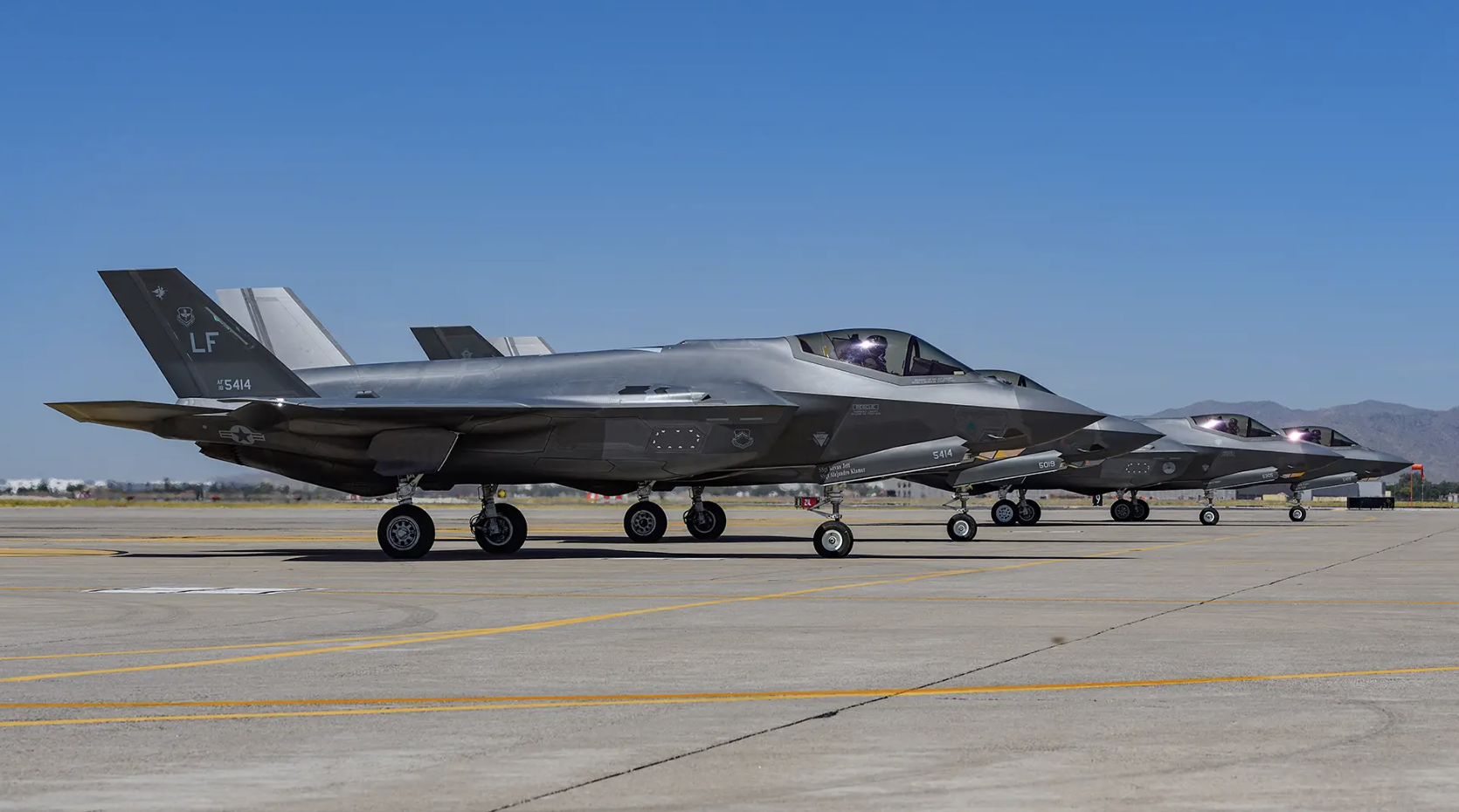
The plans for Kingsley Field were welcomed by Oregon Congressman Cliff Bentz.
“This is such great news, great news for the realtors in Klamath Falls, housing, schools… healthcare providers, this is a big deal, and I am very happy to have been a little part of making this happen,” Bentz said, according to KOBI Television, an NBC affiliate based in nearby Medford, Oregon.
The Air Force’s Fiscal Year 2024 budget request released earlier this year had provided new details about the plans to divest the entirety of the aging F-15C/D fleet, which have been ongoing for years now. Overall, as we noted before, the expected divestments in the next fiscal cycle align with plans to have these jets gone entirely by 2026.
Ultimately, it’s now planned that Kingsley Field will receive 20 F-35As, following the completion of an environmental impact analysis, which is expected to be completed in 2025. Departing the Oregon base will be its 27 F-15C/Ds, operated by the 173rd Fighter Wing, which is currently the only F-15C/D schoolhouse in the U.S. Air Force.
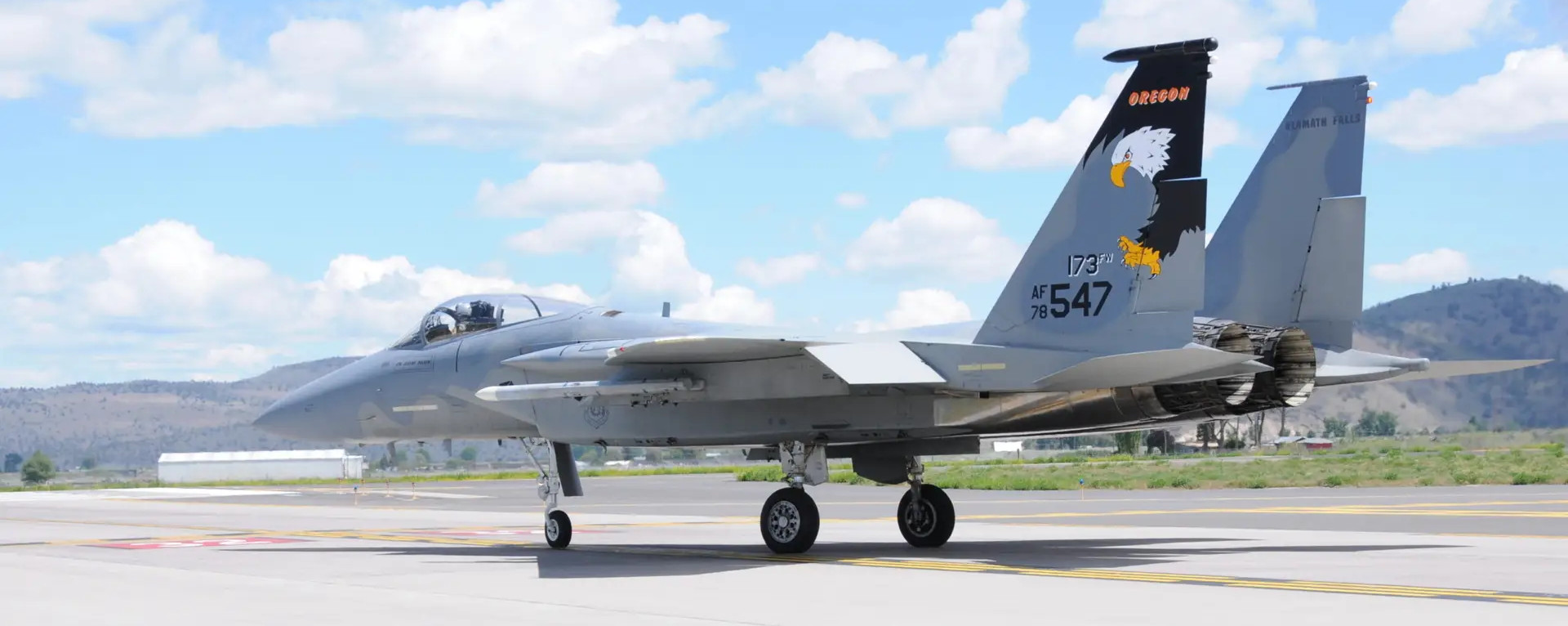
The Air Force says that Seymour Johnson Air Force Base — currently home to the F-15E FTU — will start hosting baseline-level F-15 aircrew training in early 2026. Aircrew will then complete specific F-15 model training (F-15E, F-15EX) once they reach their first operational unit, something that we have considered in the past. After all, according to Boeing, basic conversion can be done in a handful of hours at the squadron level. This could even mean that pilots get trained in the F-15E first before converting to the training F-15EX at their assigned units.
The latest decision reverses a plan to have Kingsley Field replace its F-15C/D jets with the F-15EX. At one stage, it had been expected that the first two Air Force to get the Eagle II would both be part of the Oregon Air National Guard, namely the 173rd Fighter Wing at Kingsley Field, and the 142nd Fighter Wing at Portland Air National Guard Base.
Overall, the Air Force’s ultimate fleet plan for the F-15EX, and where these aircraft will be based, has become clearer, but ambiguity still remains, especially after this announcement.
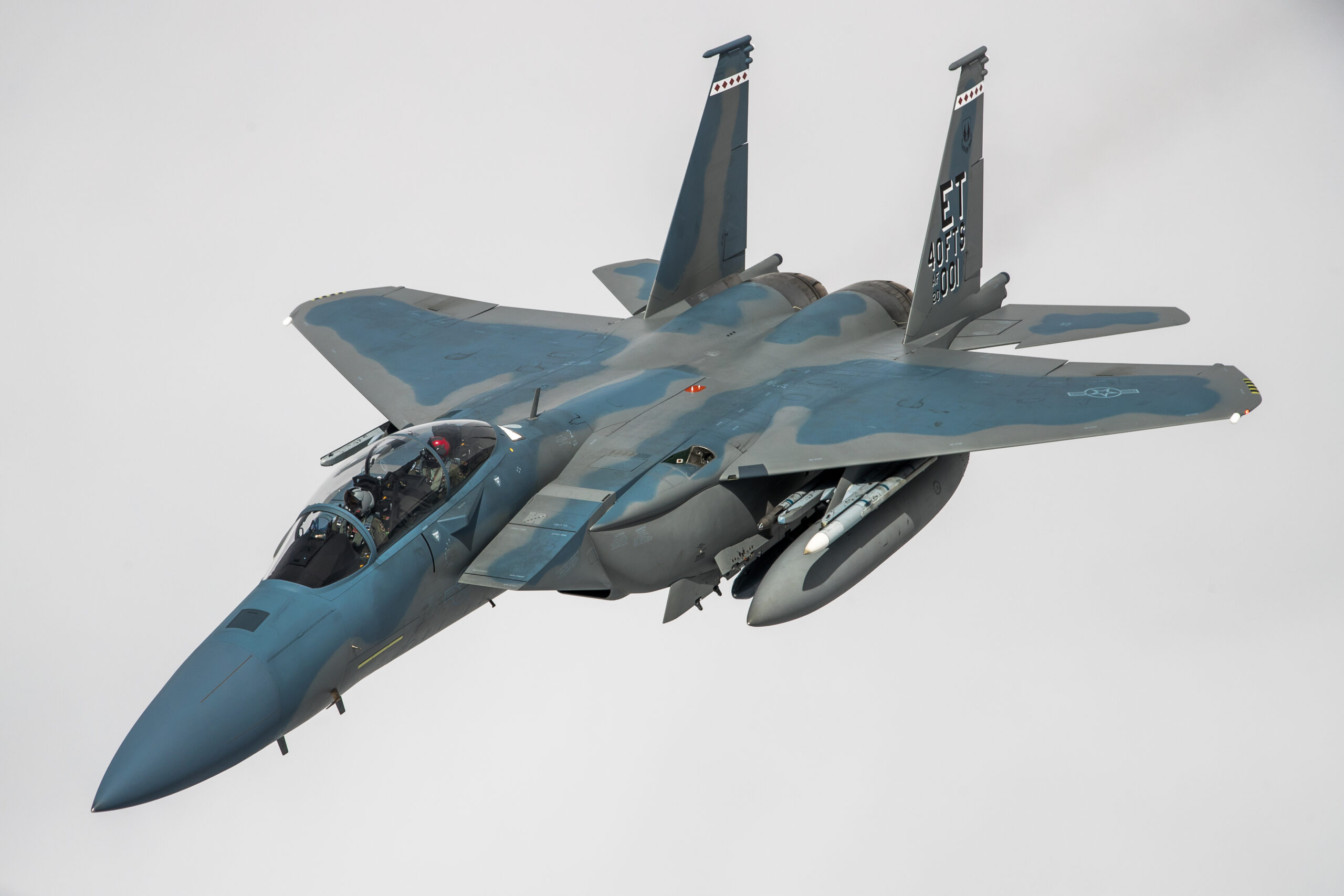
However, the Air Force has confirmed that the current fleet covers 104 F-15EX aircraft: the 94 stated in the Fiscal Year 2024 budget proposal, eight jets that were funded in previous budgets, plus two more that were funded in Fiscal Year 2022 through an above-threshold reprogramming (ATR) decision. The 104-aircraft total also includes 25 F-15EX jets that the Air Force plans to request funds to buy in the 2025 Fiscal Year.
Last year, the Air Force had said it wanted to reduce its planned purchases of F-15EXs from a minimum of 144 to only 80, so the latest budget proposal does at least improve on this, with an additional 24 aircraft.
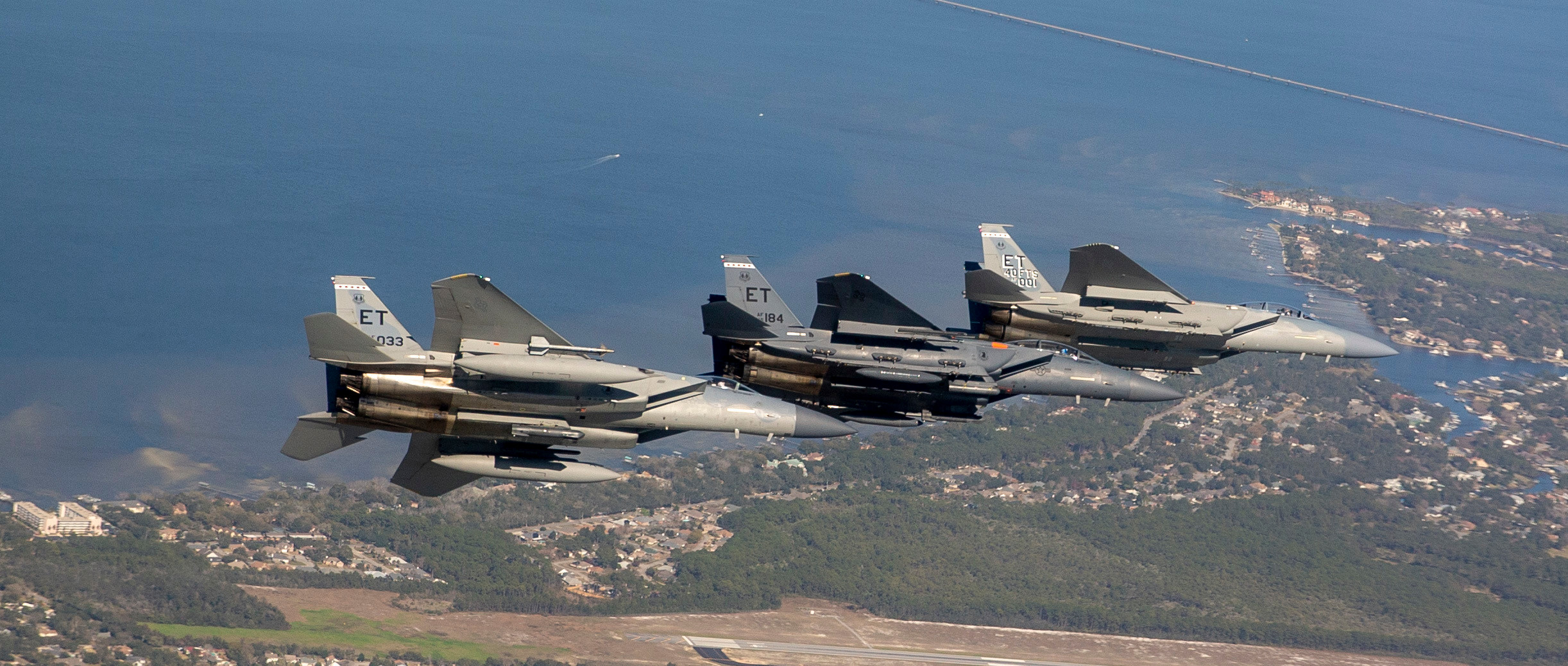
As to where those 104 Eagle II aircraft will eventually be based, that’s now open to more speculation, given that none will be headed to Kingsley Field. Now that the Air Force is freeing up more of those jets, and it’s possible, although not confirmed, that F-15Es will handle all initial training demands, this prompts additional questions about where the F-15EXs will go.
As we have pointed out in the past, a fleet of 104 jets would have been approximately enough to recapitalize around four remaining F-15C/D units across the Air National Guard (ANG) and the schoolhouse at Kingsley. These are the California, Oregon, Louisiana, and Massachusetts ANGs, each of which have a squadron of Eagles, with the main job of homeland air defense. The Air Force has recently announced plans to station F-15EX jets with the California and Louisiana Guard units. The Oregon ANG is different in that it has, for the time being, a schoolhouse squadron that provides a training pipeline for these aircraft, as well as the 142nd Fighter Wing in Portland.
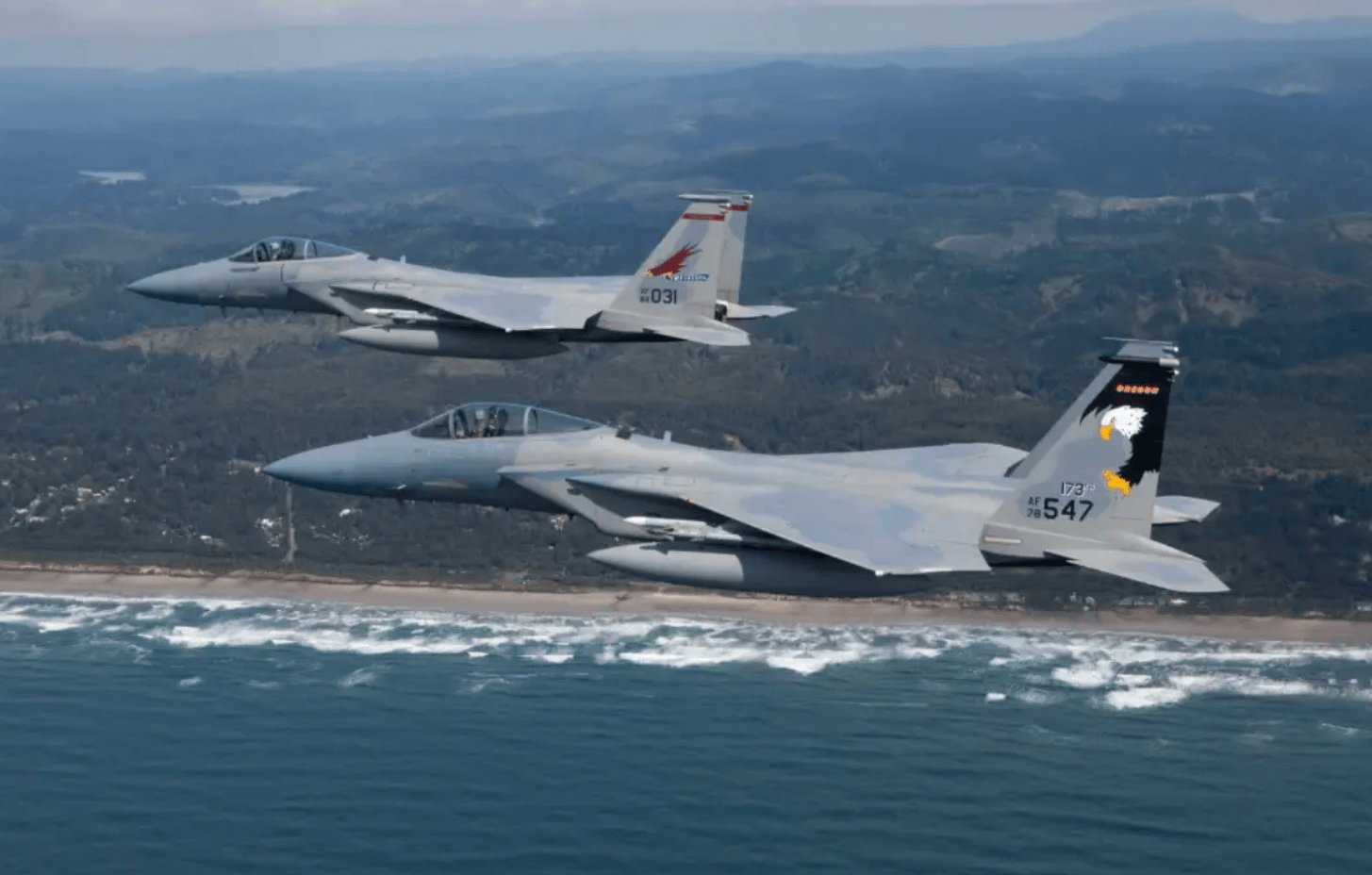
Between 2020 and 2021, the official plan was for the Oregon ANG’s 142nd Fighter Wing to be the first equipped with F-15EXs, starting this year, along with Kingsley Field’s 173rd Fighter Wing as the schoolhouse unit.
Since then, the plan to get the F-15EX to the 142nd Fighter Wing has been delayed by two years and a question mark had already begun to emerge over whether Kingsley Field would actually receive the Eagle II at all.

“Several agencies are scheduled to visit in the next few months to gather information that will help determine the Department of the Air Force’s decision regarding what mission will be best suited for the 173rd Fighter Wing,” an Air Force spokesperson told Sandboxx News.
“The discussions that I’ve heard, it’s all focused on priorities,” Air Force Senior Master Sgt. Jennifer Shirar, a spokesperson for the 173rd specifically, also said, according to Sandboxx. “Is putting the training base at Kingsley Field the right priority for us, or can we be better filled to do something else… We have a great team here that the Air Force definitely is recognizing as something that they can leverage for whatever mission they need.”
At the same time, Shirar also “acknowledged rumors that changing plans might place F-35s” with the 173rd Fighter Wing instead, which has turned out to be the case.
As we noted in the past, having the F-15EX assigned to both the 142nd and the 173rd Fighter Wings would have provided certain synergies, under the umbrella of the Oregon ANG. Kingsley Field is not the first Guard unit that will trade its F-15C/Ds for F-35As, though, with the Florida and Massachusetts ANG making the same transition. This left Oregon with two squadrons, then California and Louisiana with one, which still didn’t make sense based on the 104 aircraft plan. You can read all about these developments here. Now with Kingsley out of the picture, there could be even more F-15EXs to equip other units.
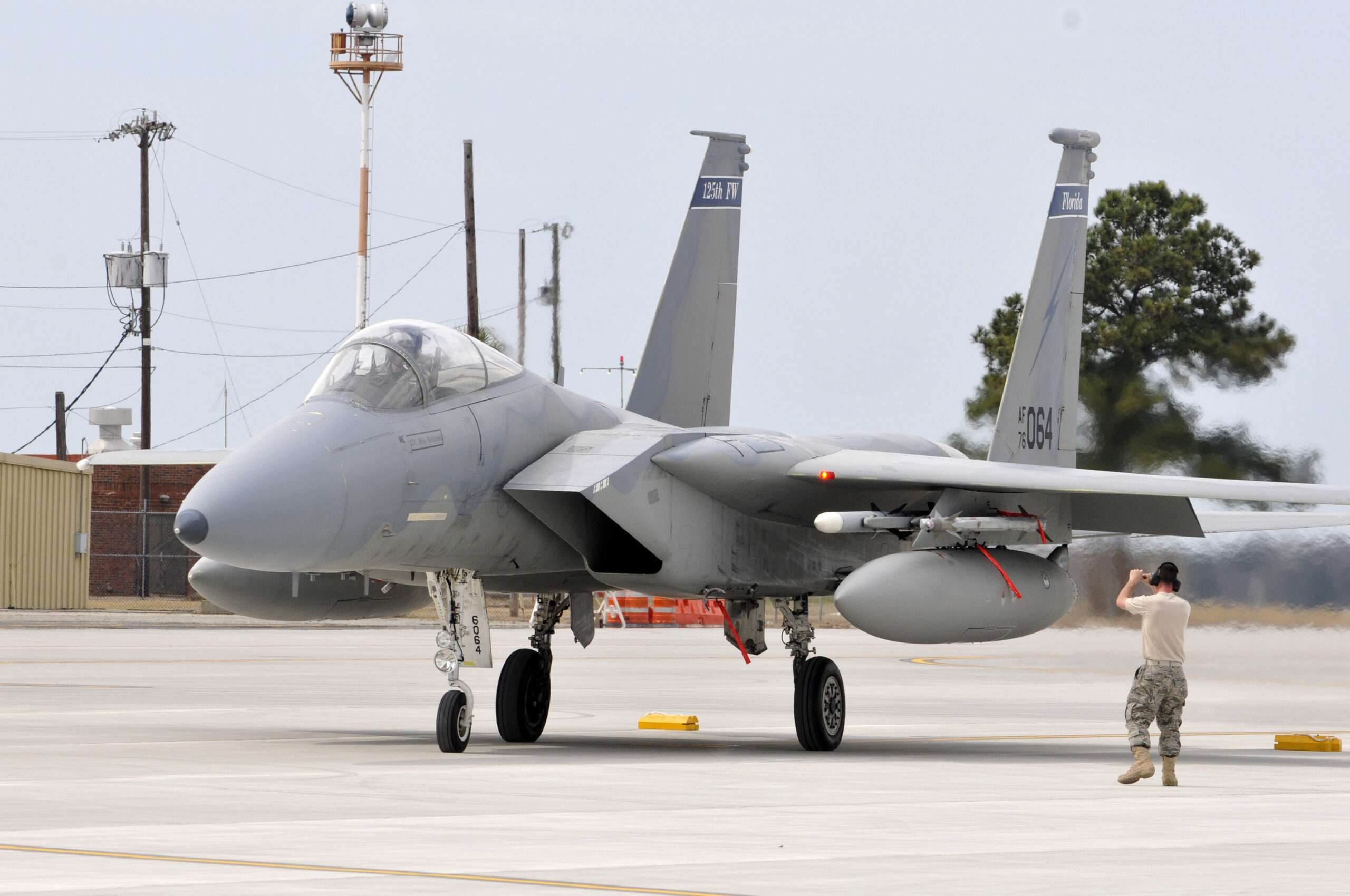
If, as now appears almost certain, the Air Force ends up with at least one, and possibly two squadrons of F-15EX that don’t have immediate homes it also re-raises the question about basing at least some of those aircraft at Kadena Air Base in Japan. The Air Force has removed its F-15C/Ds from the Okinawa base, replacing them with rotational detachments of Air Force fourth and fifth-generation fighters from elsewhere. With the service yet to decide on a long-term solution, one option could be to base the F-15EX aircraft here.
Other options exist, including converting F-16 units over to F-15EX or consolidating the F-22 force to two primary bases by realigning the Hawaii ANG from F-22s to F-15EXs, something we argued made sense in the past.
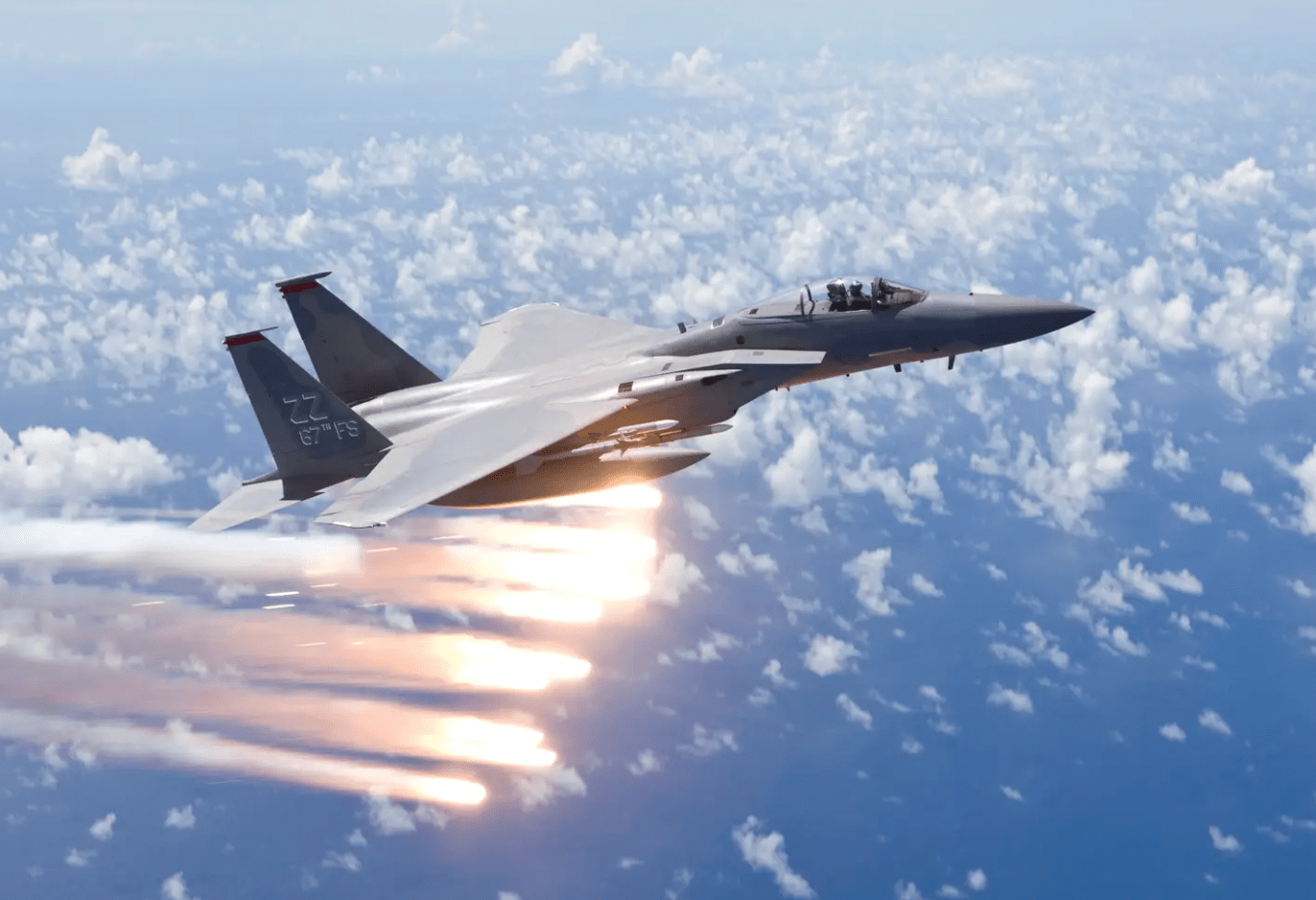
Either way, the Air Force continues to move away from earlier plans for the large-scale replacement of ANG F-15C/Ds with F-15EXs. It’s still unclear, however, to what degree these changes are intertwined with the Air Force’s plans for the F-15E fleet.
As we have reported in the recent past, there seems to be a strong possibility that the Air Force might reduce its F-15E fleet by roughly half before the end of the decade.
At a Senate Armed Services Committee hearing on the Air Force’s proposed Fiscal Year 2024 Presidential Budget on May 2, the Secretary of the Air Force Frank Kendall was asked directly about whether the service planned to cut the F-15E fleet to just 99 jets. His response was:
“I’d have to check to confirm that Senator, but I have no reason to believe it’s not correct.”
At the same hearing, Kendall also said later said of the F-15E:
“We’re going to be keeping that for some time and… there are some upgrades still underway — but not with the numbers I think that you indicated.”
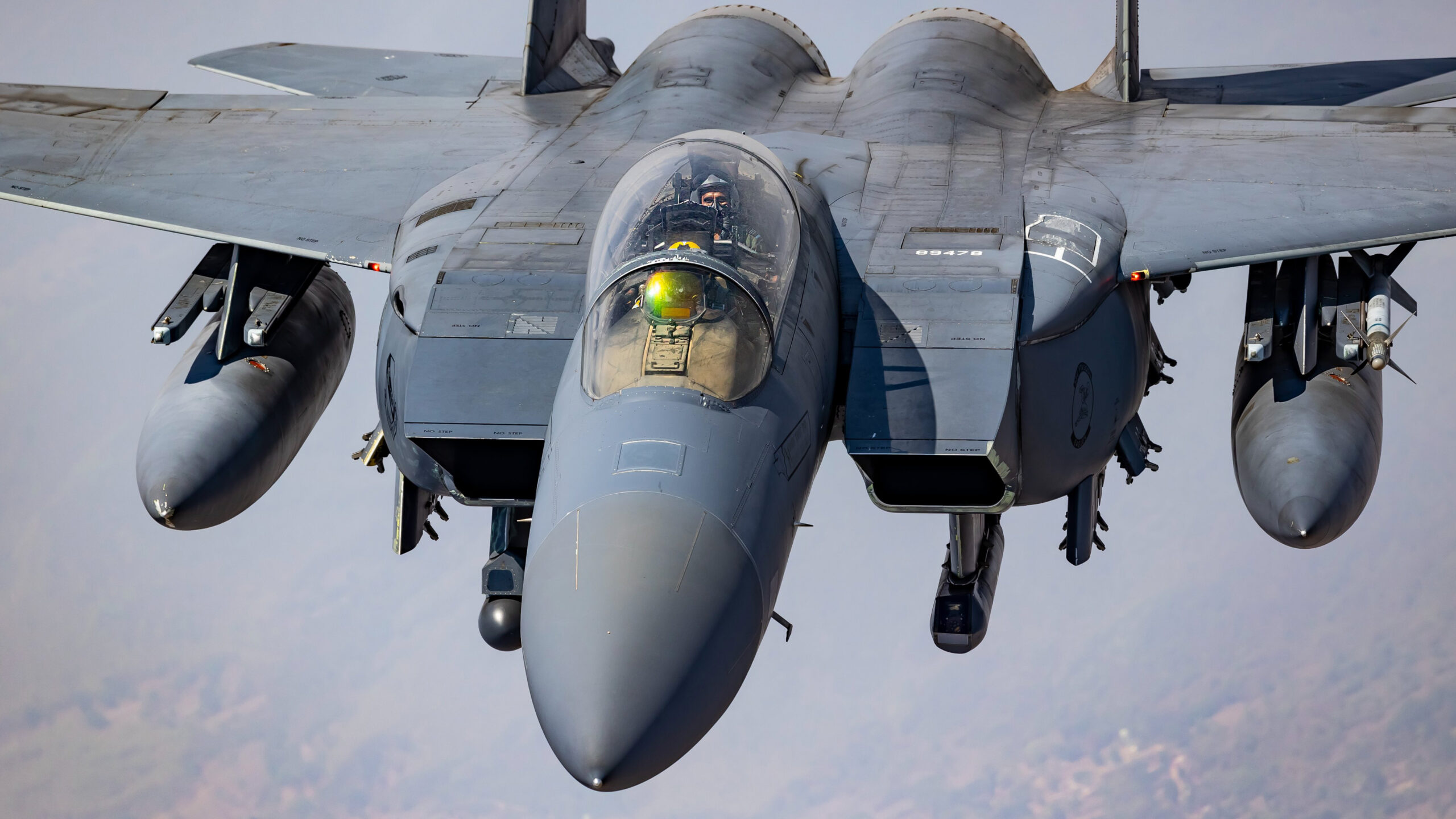
Whatever way the Air Force decides to field its F-15EX fleet, the decision to convert the F-15 schoolhouse at Kingsley Field to F-35s seems to suggest a recognition that supporting training for two relatively niche F-15 communities of roughly 100 jets each presents its own challenges and inefficiencies.
What is also clear is that the Air Force, more generally, is grappling with how best to organize its legacy fighter jet fleets, as it embarks on a major modernization effort that will very likely see more aircraft retirements. The focus is going to be increasingly put on the service’s future sixth-generation stealth fighter and the advanced Collaborative Combat Aircraft (CCA) drones that will work alongside it as part of the Next-Generation Air Dominance (NGAD) program. At this point, the Air Force is looking toward fielding 200 new NGAD combat jets and at least 1,000 CCAs, plus 300 F-35As.

With priorities driven by modernization, there will certainly be more changes coming to the legacy tactical aircraft fleets with major cuts to the total force already requested by the Air Force through the end of the decade.
Congress gets the final say on what the Air Force’s budget, and that of the rest of the military, does and doesn’t include. So more details about its plans for the F-15EX, as well as the F-15E, should emerge in the coming months as the service seeks to publicly justify its spending and force structure plans.
Regardless, the fact that Kingsley is indeed dropping its F-15 training mission is a major development in the F-15EX saga.
Contact the author: thomas@thedrive.com
